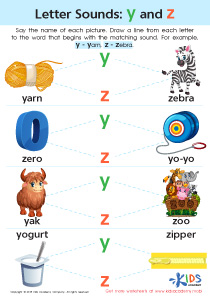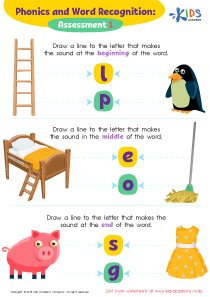Normal Ending Sounds Worksheets for Ages 3-6
4 filtered results
-
From - To
Discover our engaging "Normal Ending Sounds Worksheets" designed specifically for children aged 3-6! These printable worksheets help young learners develop essential phonemic awareness by focusing on the sounds that end words. Through fun activities, children will practice identifying and matching ending sounds, enhancing their early literacy skills in an interactive way. Each worksheet features vibrant illustrations to keep kids motivated and excited as they learn. Perfect for home or classroom use, these resources are tailored to support educators and parents in nurturing foundational reading skills. Foster a love for learning and unlock the world of sounds with our engaging worksheets today!
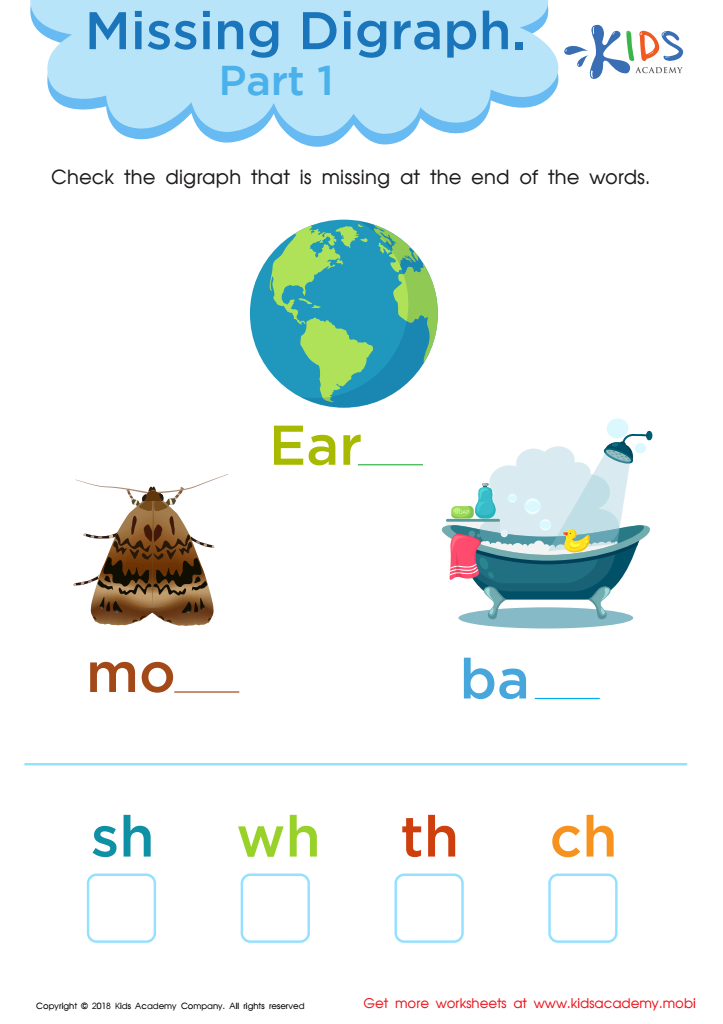

Missing Digraph: Part 1 Worksheet
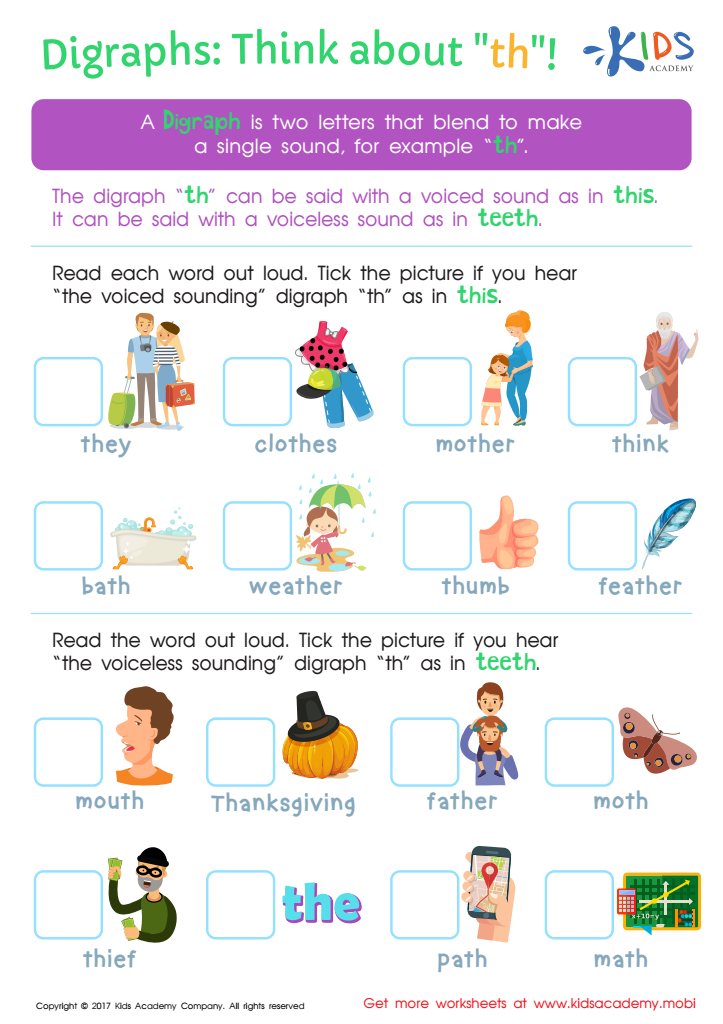

Digraphs: Think About "th" Worksheet
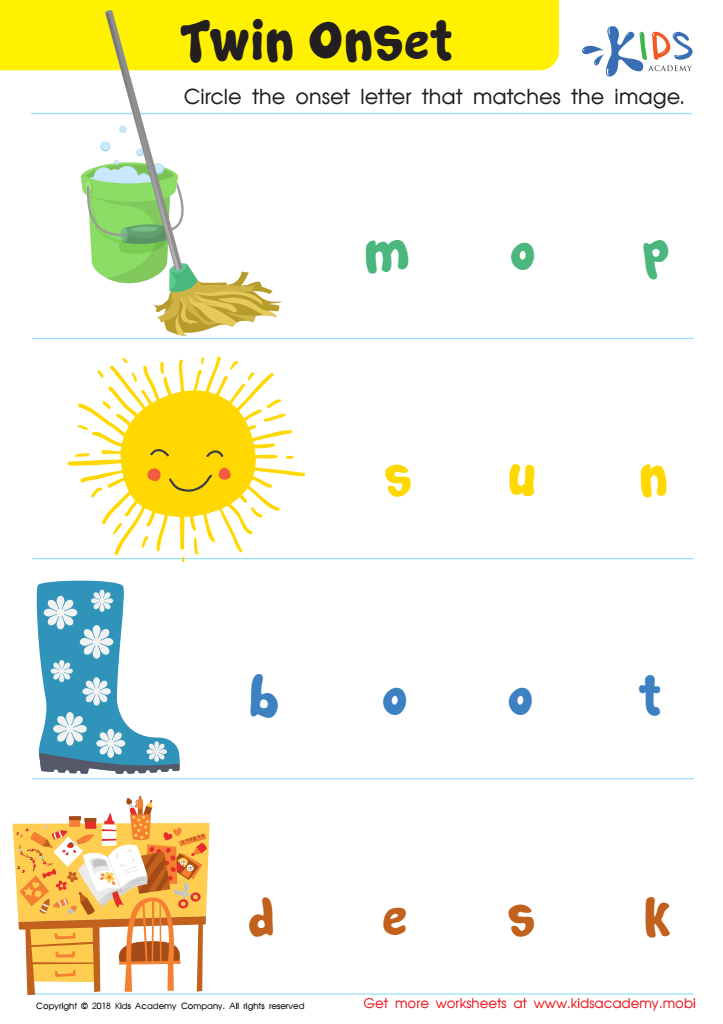

Twin Onset Worksheet
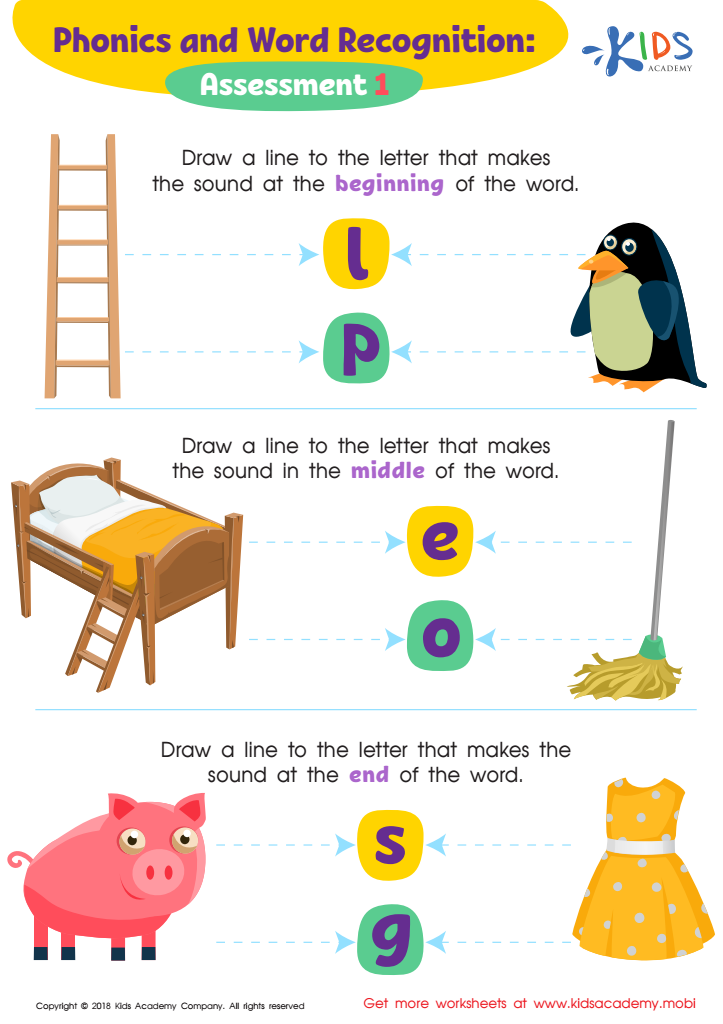

Phonics and Word Recognition: Assessment 1 ELA Worksheet
Normal ending sounds, often referred to as phonemes, play a crucial role in the language development of children aged 3-6. During these formative years, kids begin to explore and experiment with sounds as part of their literacy journey. By actively engaging with ending sounds, parents and teachers can enhance children's listening skills, vocabulary development, and phonemic awareness, which are foundational skills for reading and writing.
When children learn to identify and articulate ending sounds, they become more adept at segmenting words and recognizing rhymes, making it easier for them to decode new words and improve their reading fluency. Moreover, proficient use of ending sounds fosters spelling skills as children learn how words are constructed.
Beyond literacy, focusing on ending sounds supports cognitive development and enhances social communication. Children who are aware of how sounds work in language are more likely to express themselves clearly and understand others effectively.
Involving parents and teachers in this aspect of language education fosters a collaborative environment that can reinforce lessons in diverse settings, from the classroom to home. Therefore, caring about normal ending sounds is essential for laying a strong foundation for children's future academic success and lifelong communication skills.
 Assign to My Students
Assign to My Students






